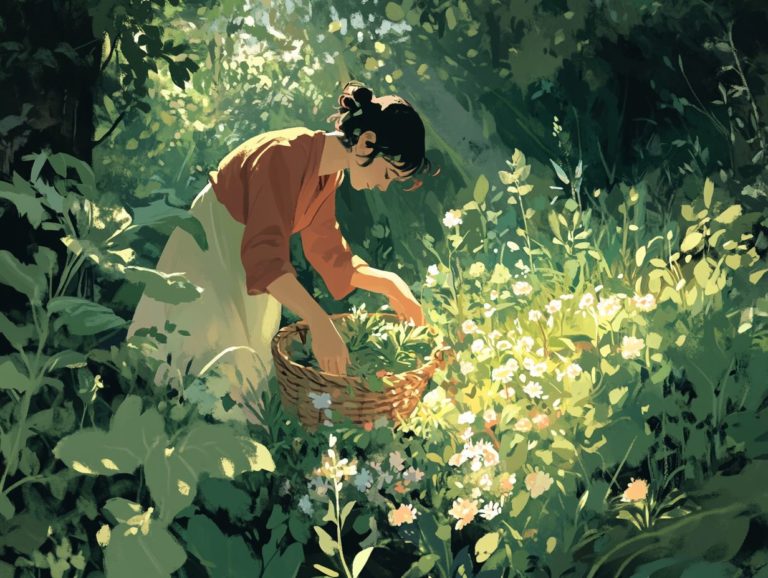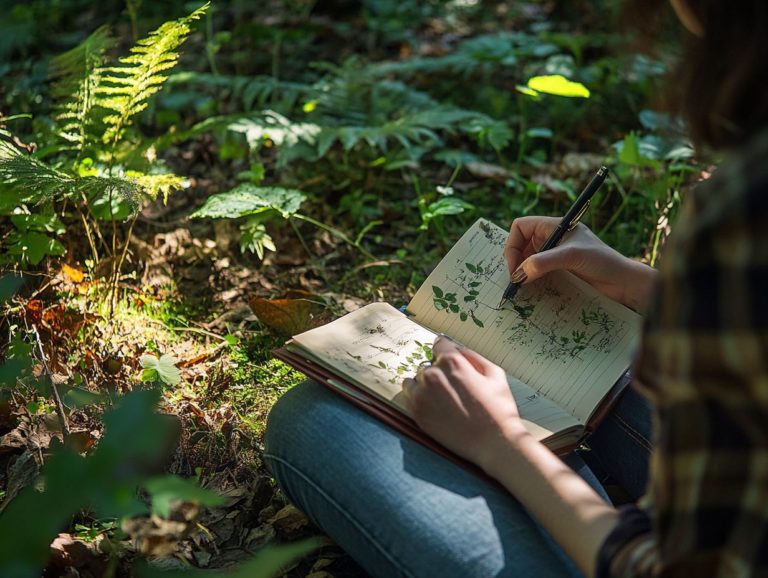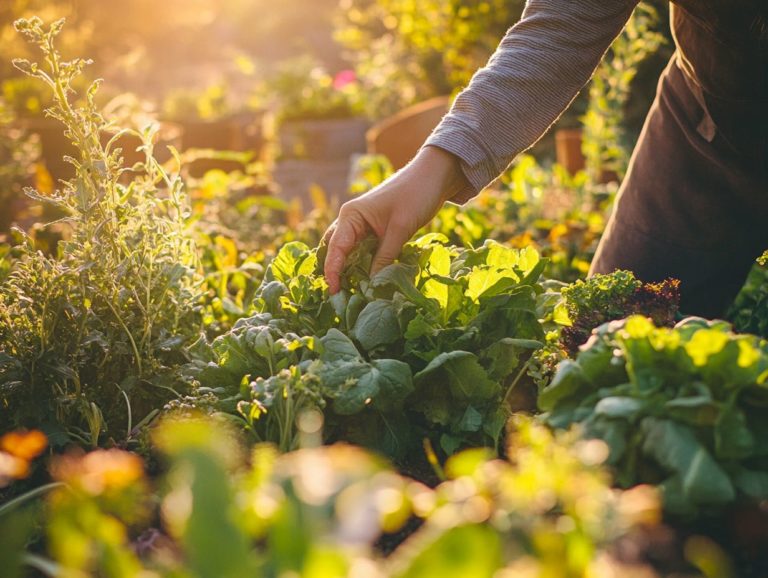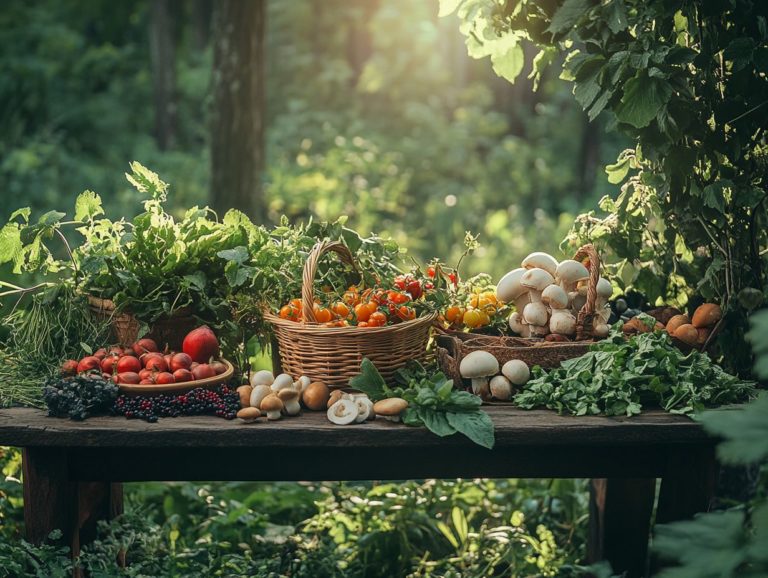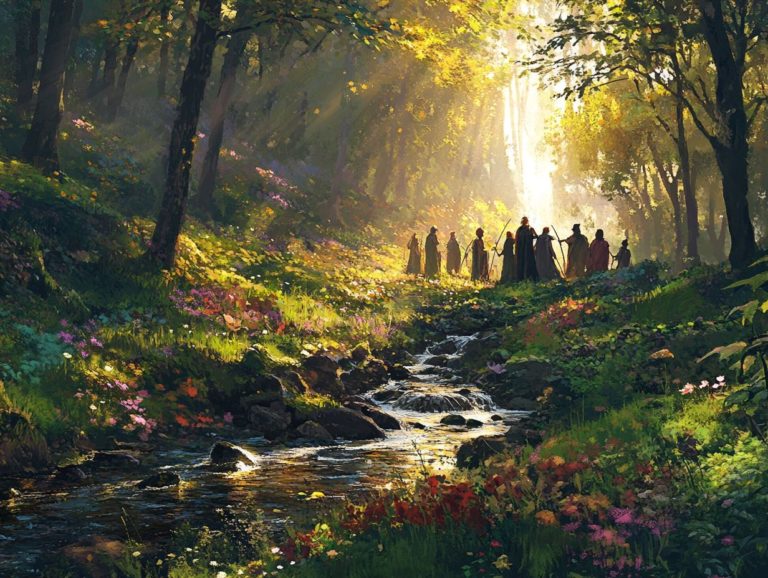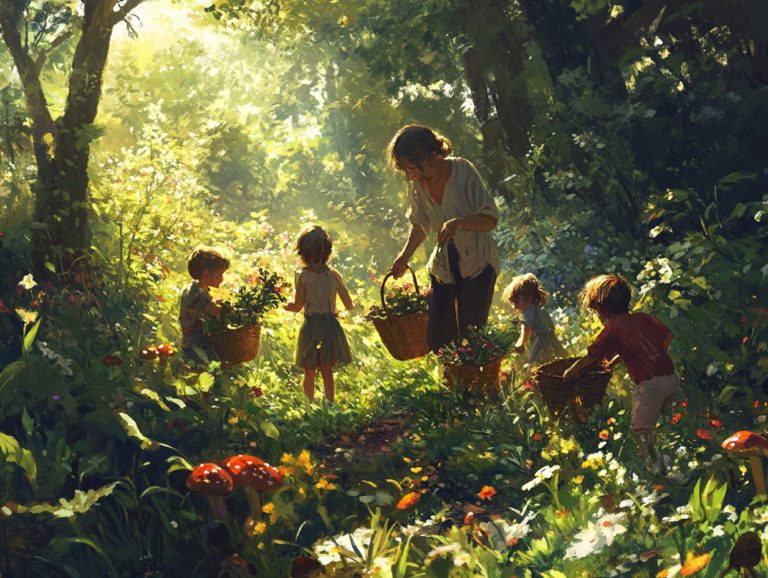Sustainable Foraging: Best Practices for Collecting Edibles
In an era where environmental awareness is paramount, sustainable foraging presents a unique opportunity for you to connect with nature while honoring its delicate balance.
This exploration delves into the significance of sustainable foraging, emphasizing its influence on ecosystems and the exhilarating adventure of uncovering edible plants and fungi. You will gain insight into identifying common species, mastering effective harvesting techniques, and selecting essential tools for your foraging journey.
You will also learn important safety tips, best practices to minimize your environmental footprint, and essential legal guidelines all designed to ensure that your foraging experience is both responsible and enjoyable.
Contents
- Key Takeaways:
- The Importance of Sustainable Foraging
- Discovering Nature s Edible Treasures!
- Foraging Techniques and Tools
- Safety Considerations
- Sustainable Foraging Practices
- Preserving and Preparing Foraged Foods
- Foraging Laws and Regulations
- Frequently Asked Questions
- What is sustainable foraging, including practices from the Catawba Nation, and why is it important?
- What are the key principles of sustainable foraging?
- How can I determine if an area is suitable for foraging?
- What should I bring with me when foraging?
- How should I harvest edibles in a sustainable way?
- What are some common mistakes to avoid when foraging, especially when identifying common plants?
Key Takeaways:
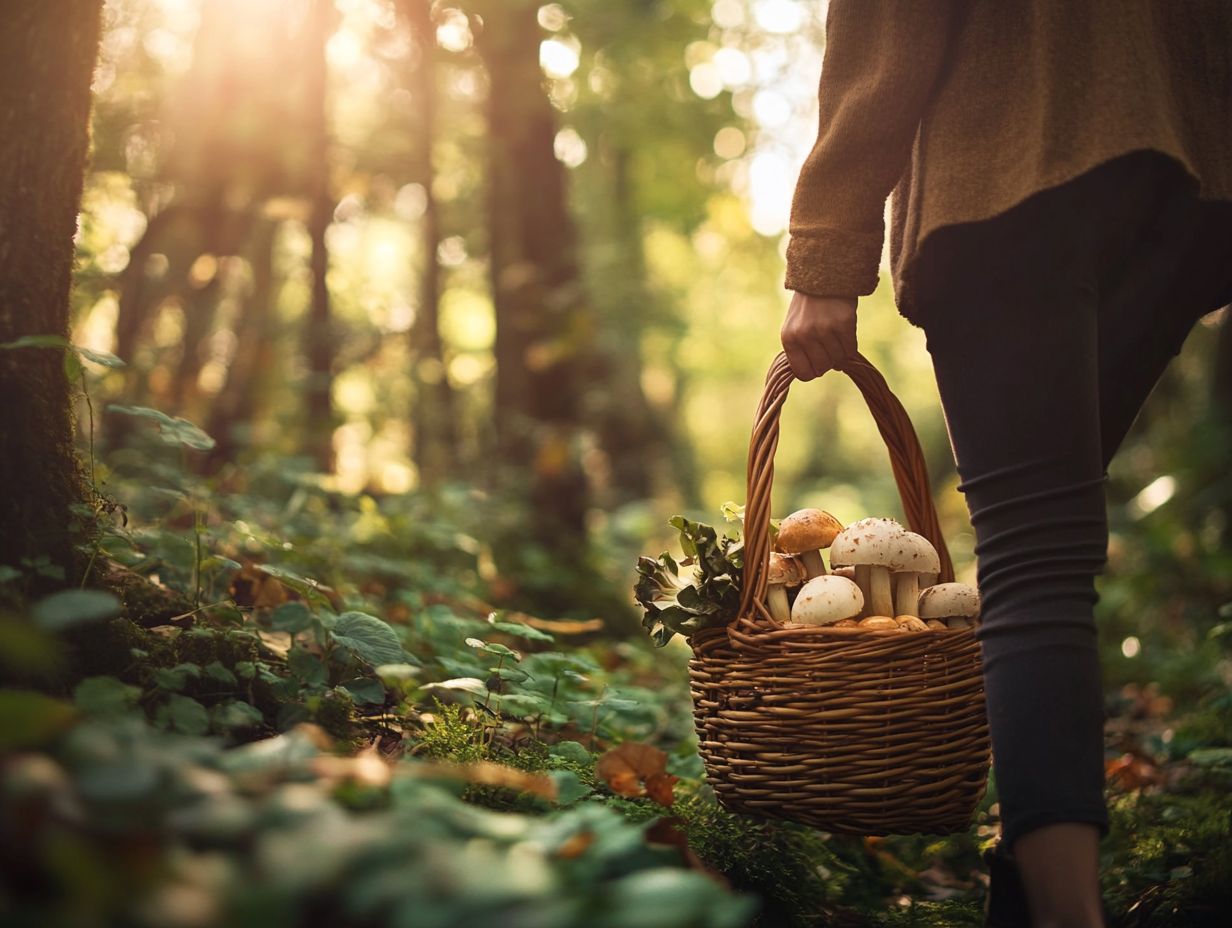
- Think about how your foraging affects ecosystems let s keep them safe!
- Always confirm that a plant or fungus is edible before trying it.
- Harvest responsibly and safely while utilizing essential tools and preserving methods for sustainable foraging.
The Importance of Sustainable Foraging
Sustainable foraging is essential in today’s world, where ecosystems are facing significant challenges from climate change, urbanization, and food deserts.
By embracing sustainable practices, you not only contribute to environmental conservation but also bolster food sovereignty and support the local economy.
The foraging community plays a critical role in promoting local ingredients and preserving indigenous foodways. This ensures that future generations can revel in the abundance of nature s offerings.
When you forage ethically, you not only respect the environment but also help it thrive! Engaging in ethical foraging practices cultivates respect for the environment and nurtures the variety of plant and animal life, allowing edible plants and fungi to flourish.
Understanding the Impact on Ecosystems
Understanding the impact of foraging on ecosystems is crucial for maintaining biodiversity and promoting sustainable practices.
When foraging is approached responsibly, it can greatly enhance the health of local environments, fostering a balance that benefits both you and nature. For instance, harvesting wild edibles like nuts and berries in moderation encourages the growth of these plants and supports the wildlife that depends on them for sustenance. To ensure safety while foraging, it’s important to consult the best local resources for foraging safety.
However, overharvesting certain species can lead to serious consequences, such as soil erosion and habitat degradation, ultimately harming local biodiversity.
Engaging in sustainable foraging allows you to reconnect with nature while actively contributing to conservation efforts. This ensures that ecosystems continue to thrive for future generations. Educating yourself and others about the ecological significance of your foraging practices is essential for preserving the intricate relationships within these habitats.
Discovering Nature s Edible Treasures!
Identifying edible plants and fungi is a cornerstone of foraging, enabling you to safely gather local ingredients from nature’s abundant offerings. Mastering the art of plant identification is essential, as differentiating between edible species and their toxic counterparts can truly be the difference between a delightful meal and a regrettable experience.
Wildcrafting not only enriches your diet but also deepens your connection to the environment, enhancing your appreciation for seasonal ingredients. Whether you find yourself navigating the bustling streets of urban foraging or exploring the tranquil landscapes of the Pacific Northwest, honing your skills in identifying edible plants ensures that you can enjoy nature in a responsible and sustainable manner.
Common Edible Species and How to Identify Them
Common edible species encompass a delightful array of wild greens and mushrooms, each boasting unique traits that make them easily recognizable.
Dandelions are easily recognizable. They burst forth with vibrant yellow flowers and jagged leaves.
On the other hand, morels have distinctive honeycomb-like caps. You can find them in forests that shed their leaves in the fall from late March to early June, soaking up the warmth of the season’s arrival.
It’s essential to understand where these plants thrive, as many edible plants prefer specific soil types and moisture levels. To sharpen your foraging skills, consider utilizing identification guides and smartphone applications that offer valuable insights and visual cues. Familiarizing yourself with local flora not only enriches your foraging adventures but also encourages ways to gather plants without harming the environment.
Foraging Techniques and Tools
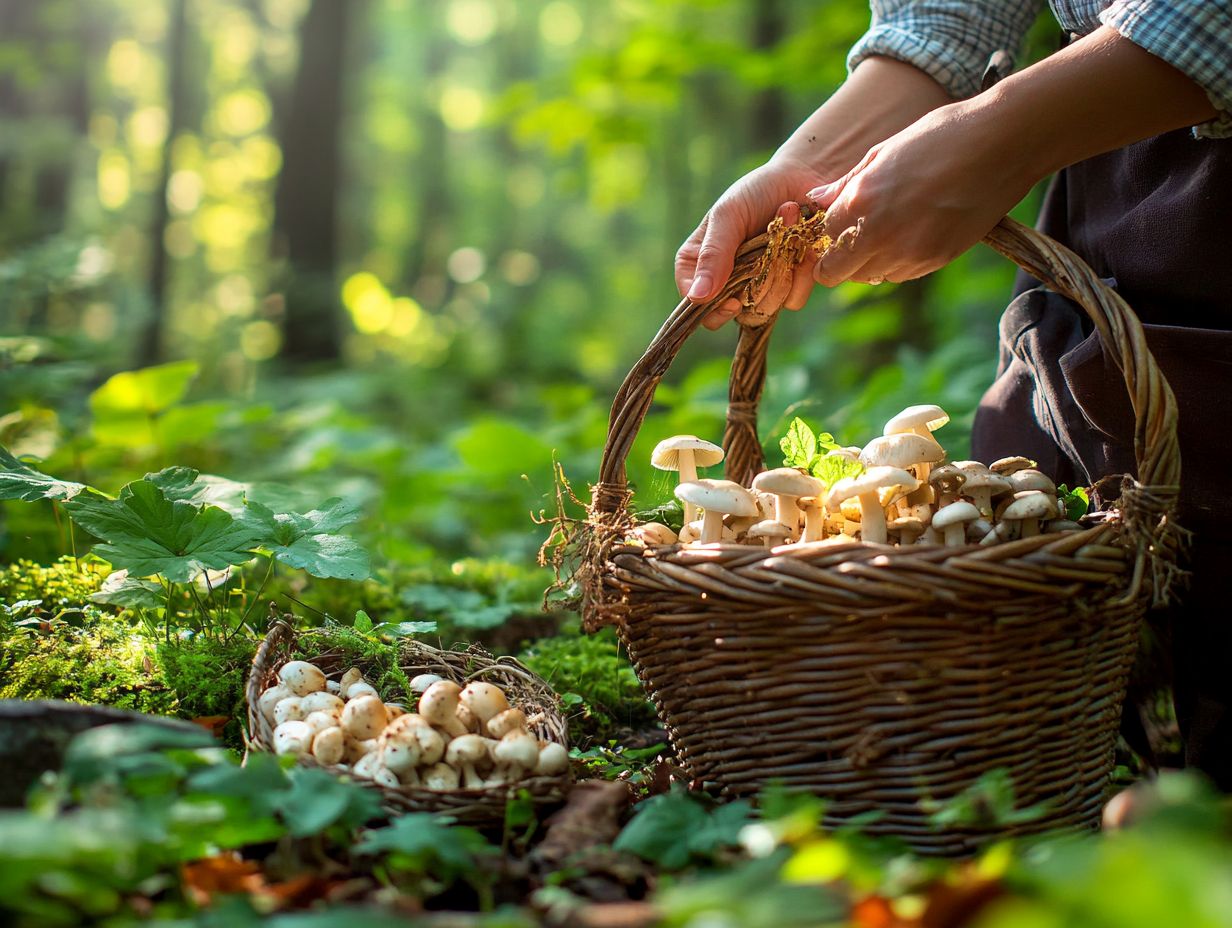
Mastering foraging techniques and utilizing the right tools can truly elevate your foraging experience, ensuring both sustainability and safety while gathering edible plants and mushrooms. To stay informed about the latest practices, check out trends in sustainability.
From understanding the optimal methods for mushroom harvesting to using specialized foraging bags and knives, each tool is crucial to the process. As you explore your local ecosystem be it within the urban landscape or the wild outdoors embracing sustainable practices becomes paramount in preserving nature’s bounty for future generations.
Best Practices for Harvesting
When you harvest, think of it as joining a conversation with nature. Adopting best practices for harvesting is crucial for ethical foraging, ensuring that ecosystems remain healthy and vibrant. To enhance your foraging experience, consider utilizing the best local resources for foraging edibles. This approach invites you to respect the delicate balance of nature while savoring the rewards of wild food.
When you engage in responsible foraging, it’s important to collect only what you need for your immediate consumption; over-collecting can deplete resources and adversely affect local wildlife. Understanding the role of conservation in wild foraging can help ensure sustainable practices.
Familiarizing yourself with the local flora and fauna is essential, as is recognizing protected or endangered species. Joining community foraging groups can offer valuable insights into sustainable practices and promote mindfulness in gathering, deepening your connection with the environment.
Essential Tools for Foraging
Essential tools for foraging include a variety of identification aids, bags, and knives, all contributing to a successful and safe experience. To effectively identify edible plants, rely on comprehensive field guides or smartphone apps that feature detailed images and descriptions, allowing you to distinguish between similar species with ease.
Practical harvesting tools, such as small trowels or foraging knives, not only make gathering herbs, mushrooms, and wild greens more efficient but also promote mindful extraction methods that align with sustainable practices. These tools encourage responsible harvesting of wild flora, ensuring that plants can regenerate while also enhancing your overall safety in the field. This fosters a well-informed approach to enjoying nature s bounty.
Safety Considerations
Safety considerations are paramount for anyone embarking on the foraging journey, as potential risks abound in the wild, particularly regarding mushroom harvesting and identifying edible plants. Understanding the dangers of foraging such as encountering poisonous species and facing allergic reactions is crucial for making informed decisions.
By arming yourself with knowledge and adhering to foraging safety protocols, you can mitigate risks while savoring the thrill of gathering fresh, wild ingredients from nature.
Ready to dive into the world of foraging? Grab your gear and explore the amazing flavors nature has to offer!
Potential Risks and How to Stay Safe
The potential risks of foraging can be daunting. From encountering poisonous plants to allergic reactions and various environmental hazards, these dangers pose serious health threats. You need to learn how to accurately identify different species. After all, it s easy to confuse an unfamiliar plant with a safe, edible one, leading to potentially perilous outcomes.
To minimize these risks, anyone eager to explore nature should carry a reliable field guide or utilize a trustworthy app for plant identification. Also, inform someone of your foraging plans, ensuring that someone knows your whereabouts in case of emergencies.
Wearing safety gear like gloves and appropriate footwear can shield you from cuts and stings. Having a stocked first aid kit and emergency contacts at the ready will offer you peace of mind during your adventure.
Sustainable Foraging Practices
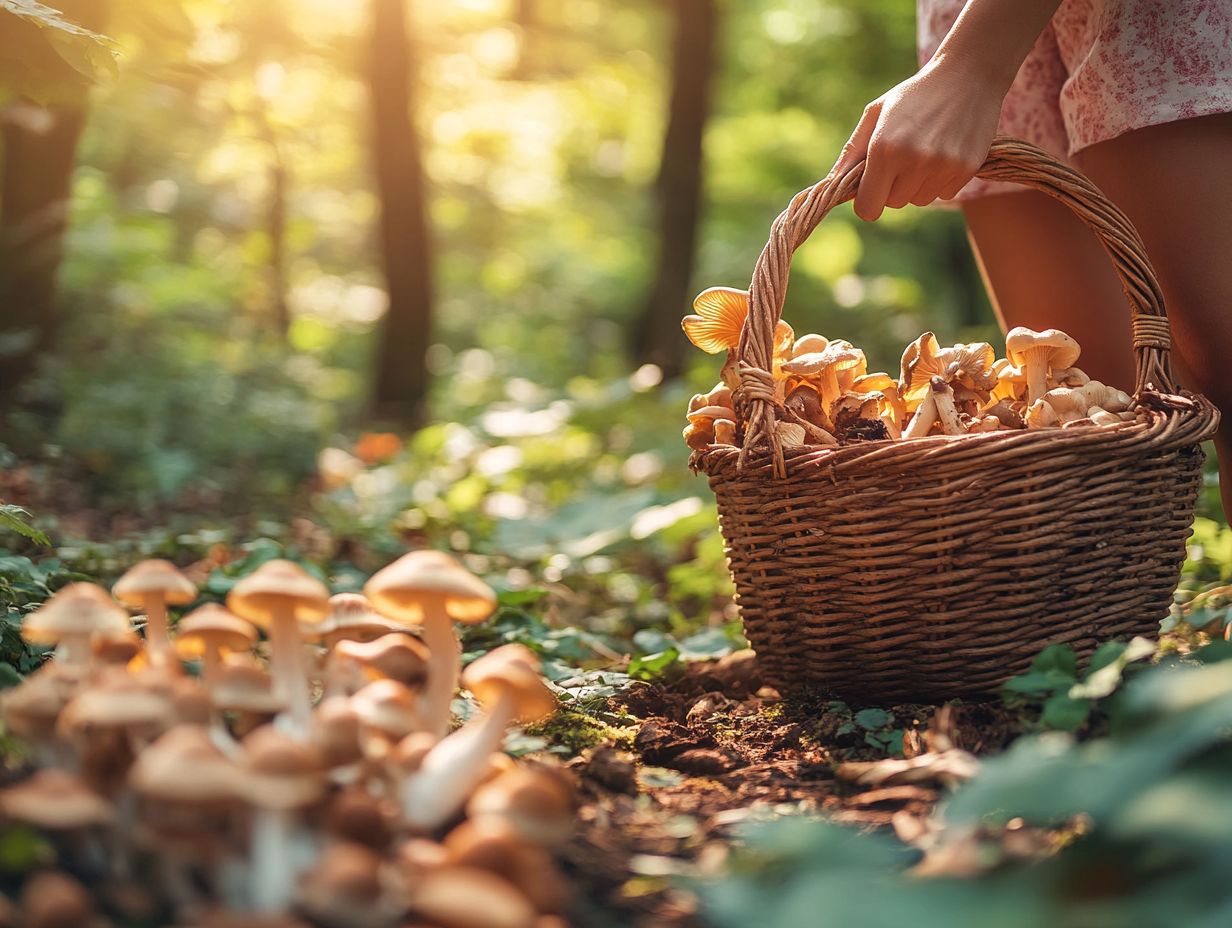
Sustainable foraging practices are crucial for maintaining ecological balance and supporting food sovereignty. Learning about the top 10 edible plants to harvest sustainably enables you and your community to thrive on local ingredients without depleting vital resources.
Understanding ethical foraging is key. You can boost your diet and help the environment at the same time! This mindful approach encourages you to be aware of your impact on ecosystems and embrace sustainable practices that foster biodiversity and promote environmental conservation.
Engaging with the foraging community, including experts like Alexis Nikole and organizations such as I-Collective, and learning from indigenous foodways can elevate your foraging experience. This ensures that future generations can savor the diverse bounty our natural landscapes have to offer.
How to Minimize Impact on the Environment
Minimizing your impact on the environment while foraging is crucial for maintaining healthy and resilient ecosystems.
To achieve this, you should adopt strategies that prioritize both the well-being of the environment and respect for local wildlife. Familiarize yourself with the specific plants and animals in your area, steering clear of endangered species and medicinal plants. To enhance your foraging practices, consider learning about foraging ethics and practice selective harvesting, which means only taking what you need and leaving plants to continue growing. Using tools that minimize disturbance to the surrounding habitat can greatly reduce your footprint as a forager.
Embracing ethical foraging not only safeguards biodiversity but also deepens your connection with nature. It encourages sustainable practices that can be passed down through generations.
Ultimately, by understanding your role within the ecosystem, particularly through practices like Urban Foraging, you can contribute to habitat conservation while reaping the rich rewards that nature has to offer.
Preserving and Preparing Foraged Foods
Preserving and preparing foraged foods enables you to relish the fruits of your labor long after the harvest season. This makes it an essential aspect of the foraging experience.
Techniques like drying, pickling, and freezing can significantly extend the shelf life of your wildcrafted ingredients. This allows you to savor seasonal flavors throughout the year. Mastering the art of cooking with the edibles you discover during your foraging adventures, including dishes featuring morel mushrooms, elevates your culinary creativity and strengthens your connection to the local ecosystems.
Learn to identify plants properly your health depends on it! We encourage you to share your foraging experiences or tips to foster community engagement.
Methods for Preserving and Cooking Edibles
Discover how to preserve and cook edibles using techniques such as drying, fermenting, and making preserves. You can also utilize Forager Goods & Co. to create innovative dishes with wild greens and seasonal ingredients.
These methods enhance the rich flavors of your foraged goods while extending their shelf life. For instance, when you dry wild herbs, you intensify their essence, making them a versatile addition to your dishes throughout the year. Fermenting adds a delightful tanginess that elevates salads or grilled items when paired thoughtfully.
Creating preserves from seasonal fruits allows the unique sweetness of your foraged finds to shine in desserts or beautifully complement savory meals. Embrace experimentation with these techniques to enjoy delightful and unexpected culinary combinations that celebrate nature’s abundance.
Foraging Laws and Regulations
Understanding foraging laws and regulations is essential for harvesting edible plants and mushrooms responsibly and legally. Each region has unique guidelines about what can be foraged, where, and how, often requiring specific permits in certain areas.
Familiarize yourself with these legal parameters to safeguard the environment and forage confidently without risking fines or legal issues. Staying informed about local laws enhances your ethical foraging practices and fosters a respectful relationship with nature s resources.
Know Your Permits and Restrictions
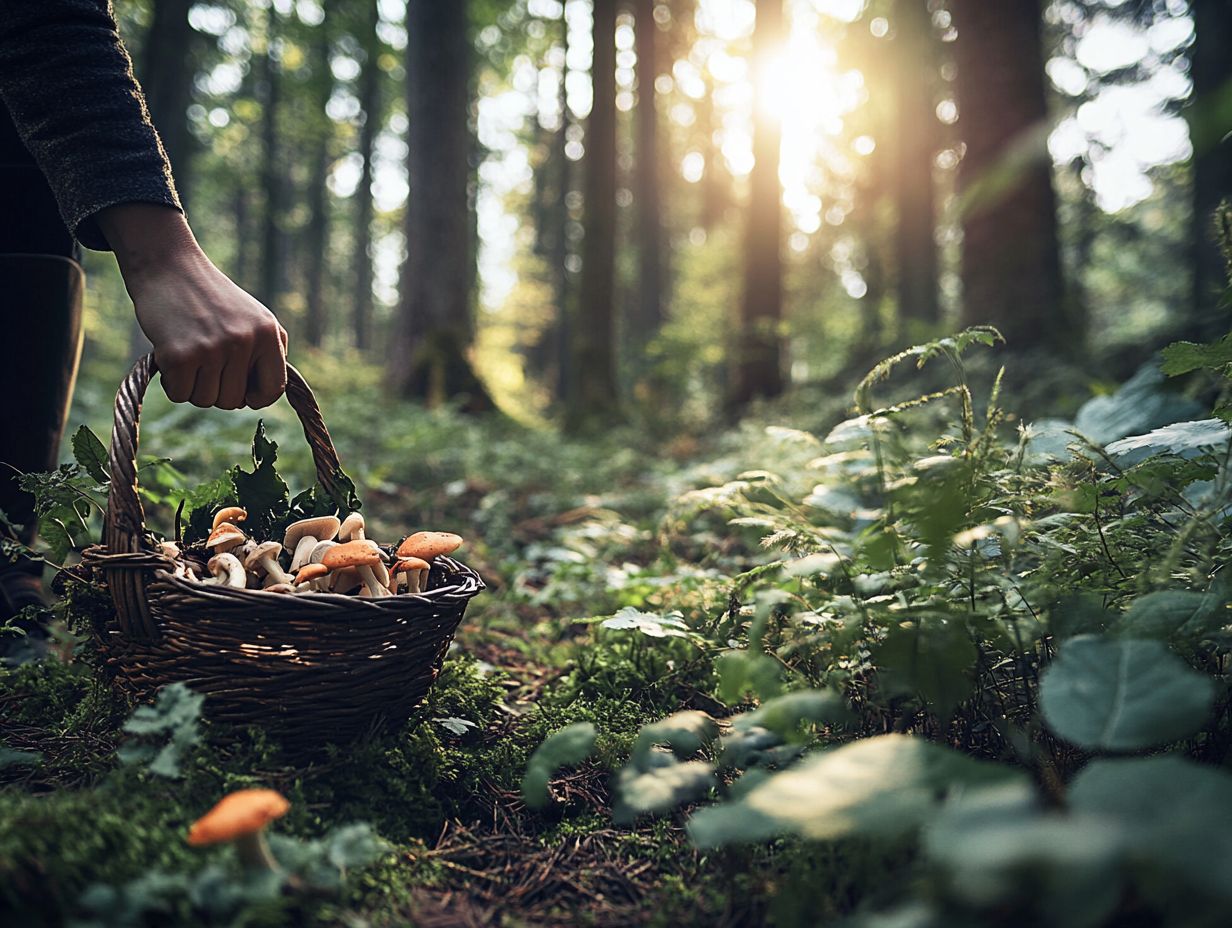
Understanding legal restrictions and permits is crucial for responsible foragers like you. These regulations protect natural resources and promote sustainable practices.
By adhering to these guidelines, you contribute to the preservation of ecosystems and biodiversity. In many areas, including national parks and certain state lands, foraging is strictly regulated or prohibited to protect native species.
For example, in the forests of California, you may need permits for mushroom collection. Similarly, specific coastal regions in the Pacific Northwest enforce rules on harvesting seaweed to prevent overexploitation.
To ensure compliance, research local laws and obtain any necessary permits for Northeast Foraging. Always respect posted signage that outlines restrictions in the area.
Frequently Asked Questions
What is sustainable foraging, including practices from the Catawba Nation, and why is it important?
Sustainable foraging refers to the collection of edible plants, fungi, and other natural resources in a way that minimizes environmental impact and ensures the ecosystem’s long-term health. Learning about wild edibles and sustainable harvesting practices is vital for the continued availability of resources for future generations.
What are the key principles of sustainable foraging?
The key principles include respecting the environment, obtaining necessary permits, only collecting what you need, properly identifying edibles, and following top resources for sustainable foraging to ensure ethical harvesting techniques.
How can I determine if an area is suitable for foraging?
Before foraging, research and understand the local laws and regulations. Consider the health of the ecosystem, the abundance of desired edibles, and the potential impact of foraging on the area.
What should I bring with me when foraging?
When foraging, bring a field guide for proper identification, a basket or bag for collecting, and necessary tools like a knife or scissors. It’s also wise to carry water, snacks, and appropriate clothing for the weather.
Get started on your foraging adventure today!
How should I harvest edibles in a sustainable way?
To harvest edibles sustainably, take only what you need and understand the importance of ethical foraging for wild plants. Avoid collecting from the same area repeatedly.
Use ethical techniques. Cut plants instead of uprooting them, and avoid damaging surrounding plants and soil.
Be sure to leave enough resources for wildlife and future foragers.
What are some common mistakes to avoid when foraging, especially when identifying common plants?
Some common mistakes to avoid include foraging on private property without permission and harvesting endangered or protected species.
Avoid hurting the environment by picking too many plants or damaging others. Always follow the dos and don’ts of foraging to protect nature!

